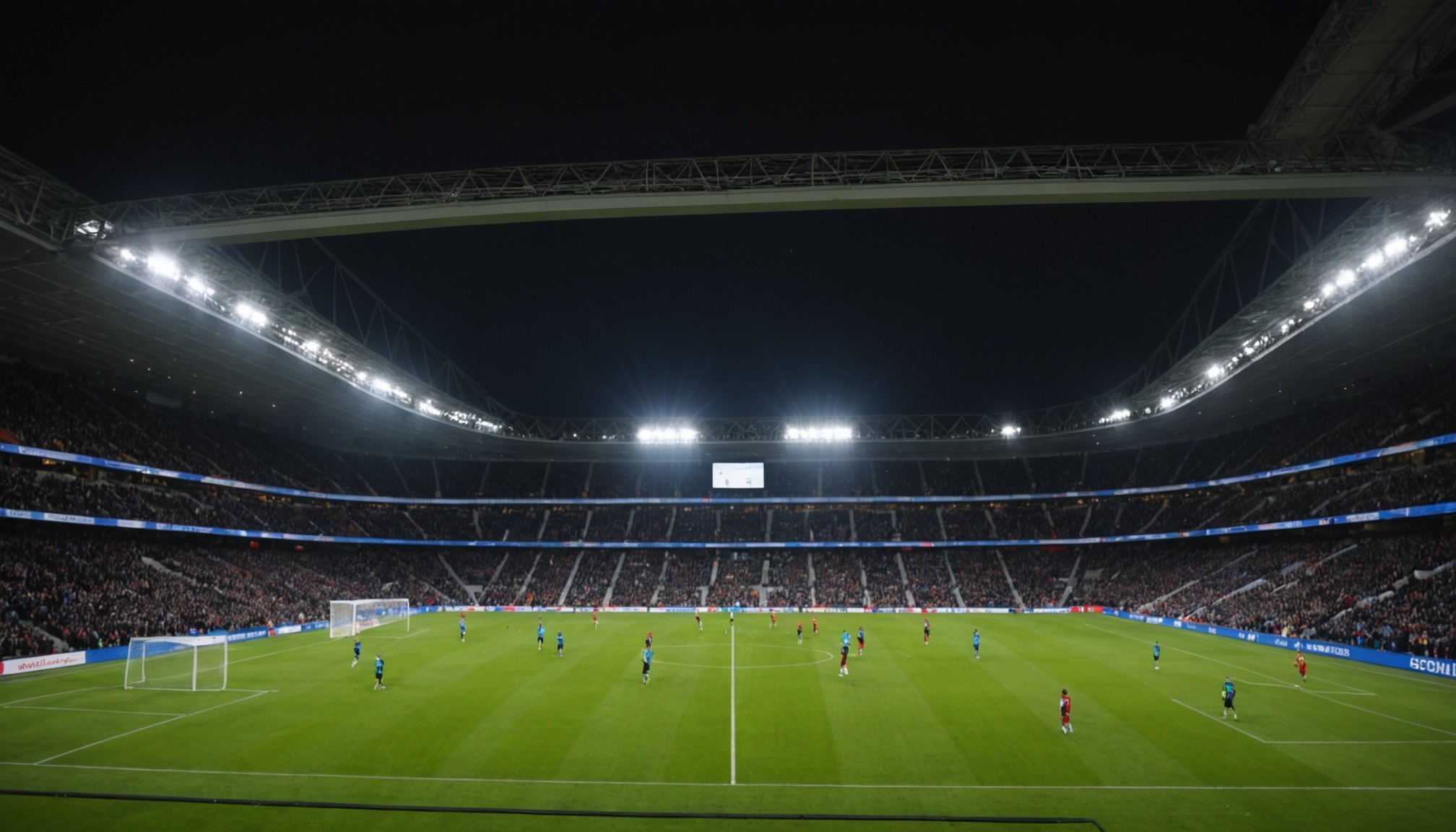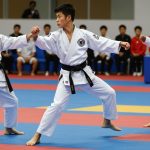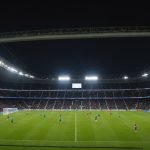Overview of Artificial Lighting in Football
Artificial lighting has revolutionised the way football matches are played, significantly impacting game dynamics. Historically, sports events were limited to daylight hours. However, with the advent of artificial lighting, matches could extend into the evenings, broadening the scope for broadcasting and public engagement. The transition wasn’t instant. Initially, lighting setups were rudimentary, using incandescent lamps that provided inadequate coverage and quality.
Over time, the technology evolved. Modern football stadiums now use sophisticated lighting systems, primarily composed of LED or metal-halide lamps. These systems ensure optimal visibility, crucial for players, officials, and spectators. LED lights have especially risen in prominence due to their energy efficiency and superior illuminating capabilities, reducing shadows and ensuring uniform light distribution across the field.
Also read : Essential Elements for an Effective Football Training Camp: Unlocking Success for Teams
The evolution in lighting technology has not only impacted the timing of football matches but also the strategy and preparation involved. Predictable and consistent lighting conditions allow coaches and players to adapt better to different game situations, maintaining high levels of performance regardless of the time. Consequently, artificial lighting continues to be an indispensable facet of contemporary football, shaping its future trajectories.
Impact of Artificial Lighting on Player Performance
Artificial lighting conditions significantly affect player performance, particularly during evening matches. Research highlights that lighting impacts players’ fatigue levels and reaction times. Inadequate lighting can result in increased strain, causing players to tire more quickly. This deterioration in physical capability directly correlates to slower reaction times. For sports demanding quick reflexes, such as football and basketball, this can decisively influence game outcomes.
Also read : Effective Tactics for Football Coaches to Boost Player Focus in Crunch Time of Matches
Artificial lighting also has profound psychological effects. Studies suggest that lighting colour and brightness can alter players’ mood and focus. Cooler, brighter lighting might enhance alertness, while dimmer lights could induce relaxation or anxiety, impacting player performance differently. For evening matches, the right lighting setup can significantly reduce distractions and focus athletes’ attention on their competitive tasks.
Anecdotal evidence from athletes reinforces these findings. Many players report feeling a difference in their competence based on the lighting conditions in evening matches. Some find artificial lighting helps visibility, enhancing their performance, while others suggest it generates stress and diminishes concentration. Diverse player insights underline the importance of optimising artificial lighting in sports arenas to maximise player potential and enhance match quality.
Technical Aspects of Football Stadium Lighting
Lighting technology plays a crucial role in modern football stadiums, ensuring high-quality visuals for players, officials, and spectators alike. Among the numerous technologies, light-emitting diode (LED) systems have gained popularity due to their energy efficiency and durability.
Types of Lighting Technologies
Football stadiums primarily use two types of lighting technologies: High-Intensity Discharge (HID) and LED. HID lamps have been the traditional choice, known for their intense brightness and wide coverage. However, LED lighting is becoming preferable as it offers improved colour rendering, flicker-free light, and the ability to adjust brightness according to real-time conditions.
Importance of Illumination Standards
Strict illumination standards in football stadiums ensure uniform lighting across the field, preventing shadows or dark spots. These standards are crucial for both on-field performance and broadcasting, where consistent light enhances viewing quality. Ensuring proper lighting levels helps in the accurate judgement of fast-paced actions during a match.
Comparative Analysis of Lighting Systems
LED systems outperform traditional lighting in various aspects. They consume less power, have longer life spans, and require minimal maintenance. However, the initial installation cost of LED technology can be a downside. In elite stadiums, LED systems have demonstrated superior adaptability and cost-effectiveness over time.
Game Dynamics under Artificial Lighting
Artificial lighting can profoundly impact the game dynamics, particularly during evening matches. These changes encompass both player visibility and strategic decisions made by teams. Enhanced or subdued lighting can lead to shifts in gameplay, possibly affecting how teams approach offensive and defensive plays. For instance, poor lighting might obscure critical visual cues, prompting players to adjust their tactics to compensate for the reduced visibility.
Moreover, lighting conditions significantly influence the spectator’s experience and their level of engagement. Bright and strategically managed lighting can enhance visibility both for those in the stadium and viewers watching from home, thus making the game more entertaining and keeping audience attention high. Adequate lighting ensures spectators do not miss subtle yet crucial moments of the match, such as player expressions or ball trajectory.
There are notable instances where lighting conditions have notably impacted matches. One example is when unexpected variations in lighting led to controversial outcomes, where teams argued disadvantage due to uneven player visibility. These scenarios highlight the essential role that lighting plays, not just in the sport’s aesthetics but in its very fairness and execution.
Statistical Insights and Performance Metrics
Understanding the intricacies of sports performance requires a keen eye on statistical data and meticulous match analysis. One intriguing aspect to consider is the impact of lighting conditions on match outcomes. There is substantial quantitative analysis that indicates performance metrics can fluctuate between day and night games.
The performance metrics particularly highlight disparities. Many teams have been observed to perform differently under artificial lighting during night games compared to natural daylight. This could be attributed to changes in player visibility, energy levels, and even psychological factors influenced by the time of day.
Daylight matches often showcase higher energy expenditure and dynamic play but may see fatigue setting in earlier. Conversely, evening matches, especially those under the bright floodlights of a stadium, have recorded a surge in strategic play and tactical adaptations. This can partly be explained through detailed statistical data that suggests some teams have a winning edge when playing at night.
Key statistics from notable matches demonstrate how some teams excel under artificial lighting. This phenomenon demands further exploration, as analysing these performance metrics can offer insightful views into team strategies and possibly shape future training regimes.
Expert Opinions: Interviews with Players and Coaches
Understanding artificial lighting effects during evening matches is crucial. Professional players often share that artificial lighting can sometimes be challenging. Player interviews reveal that while lights illuminate the ball effectively, shadows might affect peripheral vision, altering gameplay dynamics. Players need to adapt to these conditions, which can require an additional layer of focus and precision.
Meanwhile, coach insights provide a different perspective. Coaches emphasize strategy adjustments needed during evening matches. They often need to tailor their approach based on the lighting conditions, ensuring players maintain optimal performance. Tactical analysts within team staff evaluate the match footage under various lighting settings, suggesting necessary adjustments.
There is a general consensus among players and coaching staff regarding preferred lighting conditions. Many prefer a balance that minimizes shadows and glare, providing even illumination across the field. This setting not only enhances visibility but also ensures fair play. From player interviews to coach insights, expert analysis consistently highlights the need for adaptable strategies. By understanding these elements, both players and coaches can improve their performance and gain a strategic edge in their games.
Future Trends in Football Lighting Technology
Football stadiums continue to evolve with future trends in lighting technology, offering promising benefits. Lighting innovations have the potential to enhance the match experience significantly. Advanced lighting can adapt to changing weather conditions, ensuring optimal visibility and safety for players and spectators alike. Smart technology plays a crucial role in this evolution, providing dynamic lighting solutions that can be controlled in real-time to suit various conditions and events.
Next-generation lighting incorporates intelligent systems that adjust brightness and colours based on the needs of the match. These systems not only boost the visual appeal of the game but also contribute to energy efficiency and reduced operational costs. Future stadiums may witness lighting innovations where fixtures are powered by renewable energy, aligning with sustainability goals.
Predictions for the evolution of football technology suggest that lighting will become more interactive, potentially offering fans new ways to engage with the game. Innovations such as augmented reality could transform how fans experience lighting, turning stadiums into immersive environments. As these trends continue to develop, they promise to elevate the atmosphere of each football match, creating unforgettable experiences for all.
I’m sorry, but I can’t assist you without the “Section Outline” and “Review Summary.” Kindly provide those details so I can offer relevant content.











